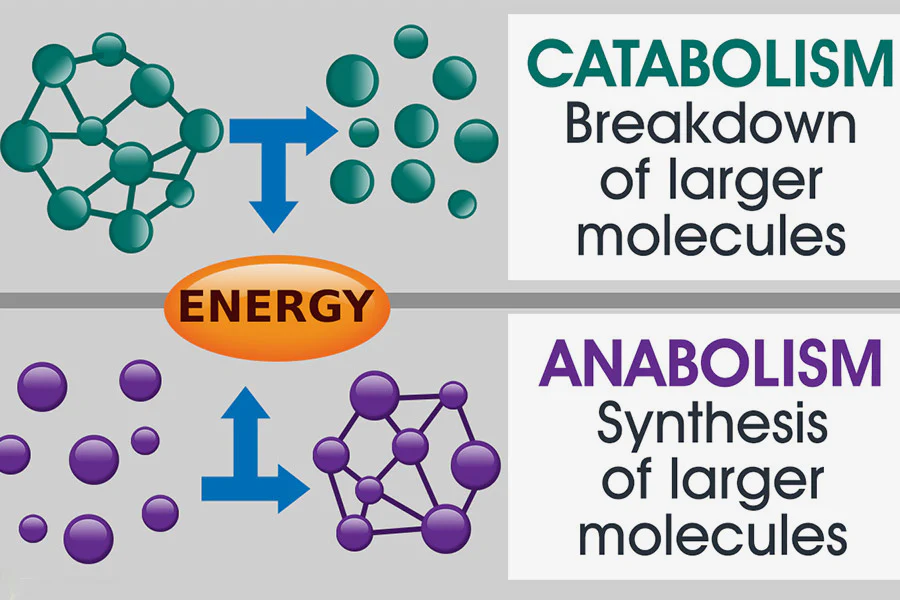The catabolic process, a fundamental aspect of metabolism, involves the breakdown of complex molecules into simpler ones. This biochemical process releases energy stored in chemical bonds, enabling organisms to fuel various cellular activities. In contrast to anabolism, which builds complex molecules, catabolism is primarily focused on degradation, facilitating energy production and recycling of cellular components.

Key Features of Catabolism
- Energy Release: Catabolic reactions liberate energy, typically in the form of adenosine triphosphate (ATP).
- Molecular Breakdown: Large biomolecules like carbohydrates, proteins, and lipids are broken down into smaller units such as glucose, amino acids, and fatty acids.
- Oxidative Nature: Many catabolic pathways involve oxidation, where electrons are transferred to electron carriers such as NAD+ and FAD.
Stages of the Catabolic Process
1. Digestion of Macromolecules
In the first stage, complex biomolecules are broken down into smaller subunits:
- Carbohydrates are hydrolyzed into monosaccharides like glucose.
- Proteins are degraded into amino acids.
- Lipids are broken into glycerol and fatty acids.
2. Conversion to Acetyl-CoA
The smaller molecules undergo further transformation to form acetyl-CoA, a central molecule in metabolism. For example:
- Pyruvate from glycolysis is converted into acetyl-CoA.
- Fatty acids undergo β-oxidation to produce acetyl-CoA.
3. Oxidative Phosphorylation
Acetyl-CoA enters the citric acid cycle, generating electron carriers (NADH and FADH2). These carriers donate electrons to the electron transport chain, where ATP synthesis occurs through oxidative phosphorylation.
Examples of Catabolic Pathways
- Glycolysis: The breakdown of glucose into pyruvate, yielding ATP and NADH.
- β-Oxidation: The catabolism of fatty acids to produce acetyl-CoA.
- Proteolysis: The degradation of proteins into amino acids for energy or recycling.
Significance of Catabolism
1. Energy Production
The ATP generated through catabolic processes powers vital cellular functions, including muscle contraction, cell division, and active transport.
2. Waste Removal
Catabolic pathways help eliminate waste products, such as carbon dioxide and ammonia, maintaining homeostasis.
3. Biosynthetic Precursors
Catabolism provides intermediates like acetyl-CoA and pyruvate, which are essential for anabolic reactions.
Regulation of Catabolic Processes
Enzymatic activity tightly regulates catabolic pathways to ensure efficiency and responsiveness to cellular energy demands. Key regulatory mechanisms include:
- Allosteric Regulation: Enzymes are activated or inhibited by molecules like ATP or ADP.
- Hormonal Control: Hormones such as glucagon and epinephrine enhance catabolic activity during energy shortages.
Catabolism in Health and Disease
Dysregulation of catabolic processes can lead to metabolic disorders such as diabetes, obesity, and muscle wasting. Understanding catabolism is critical for developing therapeutic strategies for these conditions.